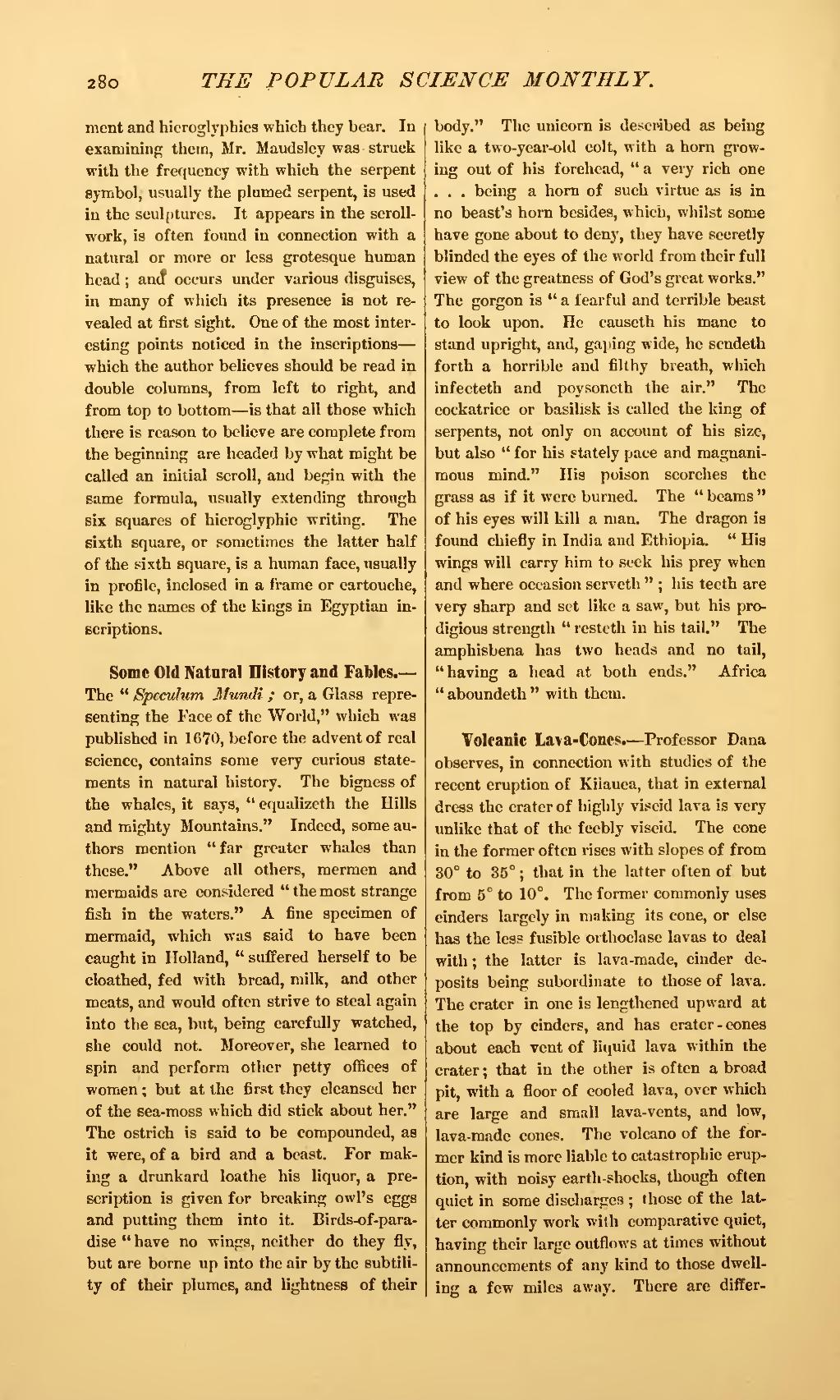ment and hieroglyphics which they bear. In examining them, Mr. Maudsley was-struck with the frequency with which the serpent symbol, usually the plumed serpent, is used in the sculptures. It appears in the scrollwork, is often found in connection with a natural or more or less grotesque human head; and occurs under various disguises, in many of which its presence is not revealed at first sight. One of the most interesting points noticed in the inscriptions—which the author believes should be read in double columns, from left to right, and from top to bottom—is that all those which there is reason to believe are complete from the beginning are headed by what might be called an initial scroll, and begin with the same formula, usually extending through six squares of hieroglyphic writing. The sixth square, or sometimes the latter half of the sixth square, is a human face, usually in profile, inclosed in a frame or cartouche, like the names of the kings in Egyptian inscriptions.
Some Old Natural History and Fables.—The "Speculum Mundi; or, a Glass representing the Face of the World," which was published in 1670, before the advent of real science, contains some very curious statements in natural history. The bigness of the whales, it says, "equalizeth the Hills and mighty Mountains." Indeed, some authors mention "far greater whales than these." Above all others, mermen and mermaids are considered "the most strange fish in the waters." A fine specimen of mermaid, which was said to have been caught in Holland, "suffered herself to be cloathed, fed with bread, milk, and other meats, and would often strive to steal again into the sea, but, being carefully watched, she could not. Moreover, she learned to spin and perform other petty offices of women; but at the first they cleansed her of the sea-moss which did stick about her." The ostrich is said to be compounded, as it were, of a bird and a beast. For making a drunkard loathe his liquor, a prescription is given for breaking owl's eggs and putting them into it. Birds-of-paradise "have no wings, neither do they fly, but are borne up into the air by the subtility of their plumes, and lightness of their body." The unicorn is described as being like a two-year-old colt, with a horn growing out of his forehead, "a very rich one. . . being a horn of such virtue as is in no beast's horn besides, which, whilst some have gone about to deny, they have secretly blinded the eyes of the world from their full view of the greatness of God's great works." The gorgon is "a fearful and terrible beast to look upon. He causeth his mane to stand upright, and, gaping wide, he sendeth forth a horrible and filthy breath, which infecteth and poysoneth the air." The cockatrice or basilisk is called the king of serpents, not only on account of his size, but also "for his stately pace and magnanimous mind." His poison scorches the grass as if it were burned. The "beams" of his eyes will kill a man. The dragon is found chiefly in India and Ethiopia. "His wings will carry him to seek his prey when and where occasion serveth"; his teeth are very sharp and set like a saw, but his prodigious strength "resteth in his tail." The amphisbena has two heads and no tail, "having a head at both ends." Africa "aboundeth" with them.
Volcanic Lava-Cones.—Professor Dana observes, in connection with studies of the recent eruption of Kilauea, that in external dress the crater of highly viscid lava is very unlike that of the feebly viscid. The cone in the former often rises with slopes of from 30° to 35°; that in the latter often of but from 5° to 10°, The former commonly uses cinders largely in making its cone, or else has the less fusible orthoclase lavas to deal with; the latter is lava-made, cinder deposits being subordinate to those of lava. The crater in one is lengthened upward at the top by cinders, and has crater-cones about each vent of liquid lava within the crater; that in the other is often a broad pit, with a floor of cooled lava, over which are large and small lava-vents, and low, lava-made cones. The volcano of the former kind is more liable to catastrophic eruption, with noisy earth-shocks, though often quiet in some discharges; those of the latter commonly work with comparative quiet, having their large outflows at times without announcements of any kind to those dwelling a few miles away. There are differ-
